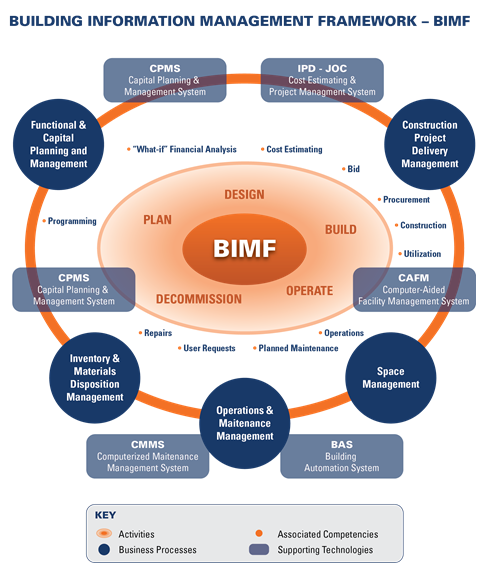3D visualization is not BIM. BIM is the process of efficient life-cycle management supported by digital technology. Until appropriate process and technologies are deployed BIM will not become mainstream and the architecture, engineering, construction, and building operations/facility management sectors will continue their trend of low productivity and waste.
The fact that construction delivery methods, associated procurement and contractual methods, and the existing culture of the “construction industry” are the sources of many if not most of its problems has been well know for quite some time. More specifically, it is the endemic lack of collaboration, communication, and long term relationships built upon performance and trust are the fundamental cracks in the foundation of the AECO (architecture, engineering, construction., operations) sector. Over twenty years ago, innovative construction delivery methods such as JOB ORDER CONTRACTING (JOC), a form of INTEGRATED PROJECT DELIVERY (IPD) came into being and have been practiced successfully for decades. However, both JOC and IPD have failed to become mainstream. JOC only now beginning to accelerate in its use due to the availability of easy-to-use technology to enable rapid and consistent deployment. BIM requires a more robust linkage (as is the case with JOC) between construction delivery and life-cycle management process and technology, to achieve a similar gain in momentum.
Various reports, white papers, have been written on the subject (see below), all of which describe the AECOO sector as ‘ineffective’, ‘adversarial’, ‘fragmented’, ‘incapable of delivering for its customers’ and ‘lacking respect for its employees’. All call upon collaboration and partnering by all built-environment stakeholders as a requirement for efficient management practices.
Transparency, openness, co-operation, trust, honesty, commitment and mutual understanding among team members where all common terms in these prior reports, and are fundamental to JOB ORDER CONTRACTING. As specifically noted in the Latham Report,
- “Partnering includes the concepts of teamwork between supplier and client, and of total continuous improvement. It requires openness between the parties, ready acceptance of new ideas, trust and perceived mutual benefit…. We are confident that partnering can bring significant benefits by improving quality and timeliness of completion whilst reducing costs.” (para 6.45, p. 62)[2]
- “Partnering arrangements are also beneficial between firms…. Such arrangements should have the principal objective of improving performance and reducing costs for clients. They should not become ‘cosy’. The construction process exists to satisfy the client. Good relationships based on mutual trust benefit clients.” (para 6.46, p. 62)
Job Order Contracting is a form of IPD targeting renovation, repair, sustainability and minor new construction. Details of this efficient project delivery method and supporting digital technologies can be found in the references below. 
46453858-Asset-Lifecyle-Model[1]
- Ward, Don and Crane, Alan (2003) “The story so far” in Jones, David, Savage, David and Westgate Rona, Partnering and Collaborative Working (Informa Professional, London), pp. 1-26.
- Latham, M. (1994), Constructing the Team, London: HMSO.
- Bennett, J. and Jayes, S. (1995) Trusting the Team, Reading: Centre for Strategic Studies in Construction, The University of Reading, with the partnering task force of the Reading Construction Forum.
- Construction Strategy, Cabinet Office – http://www.cabinetoffice.gov.uk/resource-library/government-construction-strategy (accessed 30 January 2012)
- JOC White Paper –
- A Primer for Job Order Contracting


